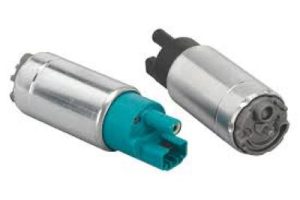An important part of the cold start functionality comes from the fuel pump: it ensures that enough fuel can quickly reach for engine, allowing to light a fire when its really chilly outside. The weather can make fuel viscous, or thicker, so it does not flow as well through the lines to your engine. Under these circumstances, the fuel pump has to put in work just so you can get forces at a normal level between 30 and up to around psi proper for how your engine operates. If fuel pressure drops during a cold start, the air/fuel ration will go haywire causing either missfires, rough idling or retarded ignition.
Electric fuel pumps in modern vehicles, frequently housed inside the tank of gasoline or diesel fuel to keep them cool (they can overheat otherwise), activate as soon as you turn the ignition key and deliver gas almost immediately. Your Ford fuel pump also serves a priming function which is essential during cold starts to ensure that there is no lag in the delivery of this important fluid; again, if your vehicle did not have enough gasoline soon after it turned over and started combustion you would just flood along until air filled up most all of the cylinder space. The California Air Resources Board (CARB) cited studies into the maginot fuel priming systems in cars, which have showed that those vehicles equipped with efficient primer system can be started as much 25-30% faster under cold weather condition just because there is an immediate fuel flow to a drizzle of gasoline and again it stabilizes air/fuel mixture homeostasis.

Fuel pump relays and sensors help to keep fuel flowing along with maintaining the appropriate pressure during start up, which in extreme cold conditions is more important than ever. Relays provide uninterrupted voltage to the pump, mitigating any electrical resistance that cold temperatures can create. A stable 12-14 volts is important, especially in sub-freezing conditions when electrical systems can become lethargic and the pump needs to operate efficiently. In the opinion of cold-weather performance mechanics, keeping a constant voltage helps eliminate start-up issues and reduce battery drain since the pump has to operate for only a short time when there's steady fuel pressure.
Fuel quality can also be an issue as fuel tanks become more prone to condensation during the colder months, which introduces water into the fuel.mybatisplus If there are water particles that can very well freeze, this has the ability to clog up parts of the pump or lines. De-icers might work to reduce water content in the fuel, but mother nature still wreaks havoc on them by forcing more strain upon every start up of a cold engine. To prevent clogging and ensure the pump can deliver an effective flow, high-performance pumps frequently include additional options that minimize any colder temperatures from leading to bad starting.
Fuel Pump: A good Fuel Pump that is in the correct specification will increase cold start performance, decrease fuel wastage and trigger rapid engine warmup. This is important for rapid fuel delivery, making sure the pump provides enough gasoline to facilitate quick and smooth engine starts even in frigid winter environments.